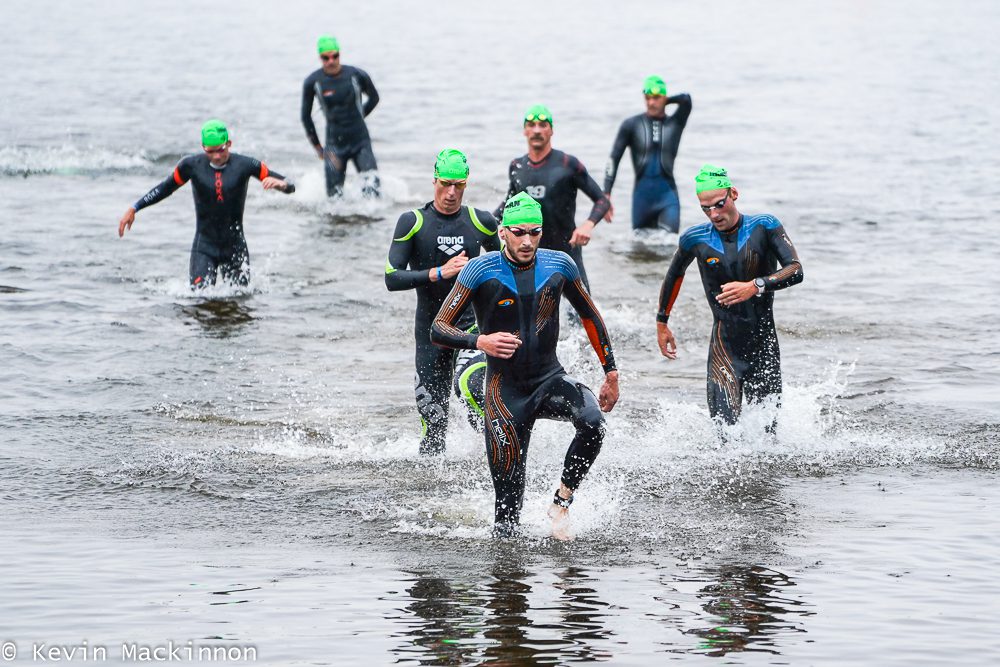With 70.3 Lubbock a month away, Ironman announces Safe Return To Racing Guidelines
Ironman releases guidelines for racing based on "standards from the World Health Organization and guidance from Ironman Global Medical Advisory Board.

Ironman 70.3 Lubbock in Texas is still set to go next month – today Ironman released series of new race guidelines as part of the Ironman Smart Program that reduce touch points at events and require athletes to be more self-reliant during races.

According to a release posted today, “Ironman benchmarked races around the world in order to identify and measure concentrations of physical touchpoints, proximal interactions, and density, focusing on every aspect of the race experience, from when athletes arrive at an event until they leave the venue post-race.”
Related: Triathlon cancellations and postponements due to the coronavirus COVID-19 pandemic
The new race guidelines are said to “eliminate up to 90 per cent of total touchpoints and interactions for athletes in a typical race.”
The Safe Return to Racing principles:
- Enhanced Hygiene: Hand sanitizer, hand washing stations, and disinfectant wipes will be readily available around our venues. Cleaning of common venue areas will be enhanced. Staff and volunteers will be provided with face coverings and gloves to be used while working in all athlete-facing areas. Athletes will be provided with face coverings at packet pickup and are expected to wear a face covering around event venues.
- Screening and Education: Appropriate personal health, personal hygiene and safe support education and training will be provided for staff and volunteers in necessary functional areas. This includes the future expansion of the IRONMAN Smart Program to provide Volunteer Smart™ guidelines for volunteers. Athletes and volunteers will be required to fill out a pre-race health questionnaire. Additionally, in many venues no-touch body temperature screening will be instituted. Per the World Health Organization guidelines, individuals with a body temperature of greater than 100.4º Fahrenheit or 38º Celsius will not be allowed to race, volunteer or work.
- Density Reduction: We will institute measures to increase space for athletes and supporting personnel in areas such as swim start, transition, and finish line. Modification or elimination of non-essential race services and functions, such as banquets may also occur.
- Touchpoint Minimization: We will reduce or remove touchpoints and points of interaction between staff, athletes, and volunteers without compromising event safety and security, through redesign and reconfiguration of event village areas as well as race course zones such as aid stations.
- Athlete Self-Reliance: Through the Athlete Smart™ program, athletes will be empowered to determine their individual level of self-reliance to further minimize interaction and touch points with race officials and volunteers. Athletes will be encouraged to Race Smart™ by carrying nutrition and hydration while utilizing items such as hydration vests and event offered special needs stations. Athletes should review and embrace Athlete Smart Self Reliance Tips which can be found here www.ironman.com/return-tips.
Ironman has also posted a series of “self-reliance tips” designed to “assure personal safety while training and … ultimate success on race day.” The tips encourage athletes to “know the course,” be able to fix a flat or dropped chain, plan nutrition needs accordingly and organize meeting points and schedules with family and friends.
“Safety and community have always been the north stars of our organization, and while the decision around when to host races will ultimately depend on local communities and public health authorities, we have been working with experts and race stakeholders on how to conduct events in a post-COVID environment that allows for the economic, mental and physical benefits endurance events provide,” says Andrew Messick, Ironman Group president and CEO. “We have created a plan for returning to racing and believe that these guidelines keep our athletes, volunteers, staff and communities safe. These guidelines are designed to help our communities with the return to healthy and safe racing so they can once again secure the benefits of hosting our races.”
According to the release, Ironman has also created a “Return to Racing Athlete Pledge” which “emphasizes the renewed athlete and participant responsibility for competitive cooperation, providing space and time for everyone to participate safely.”
